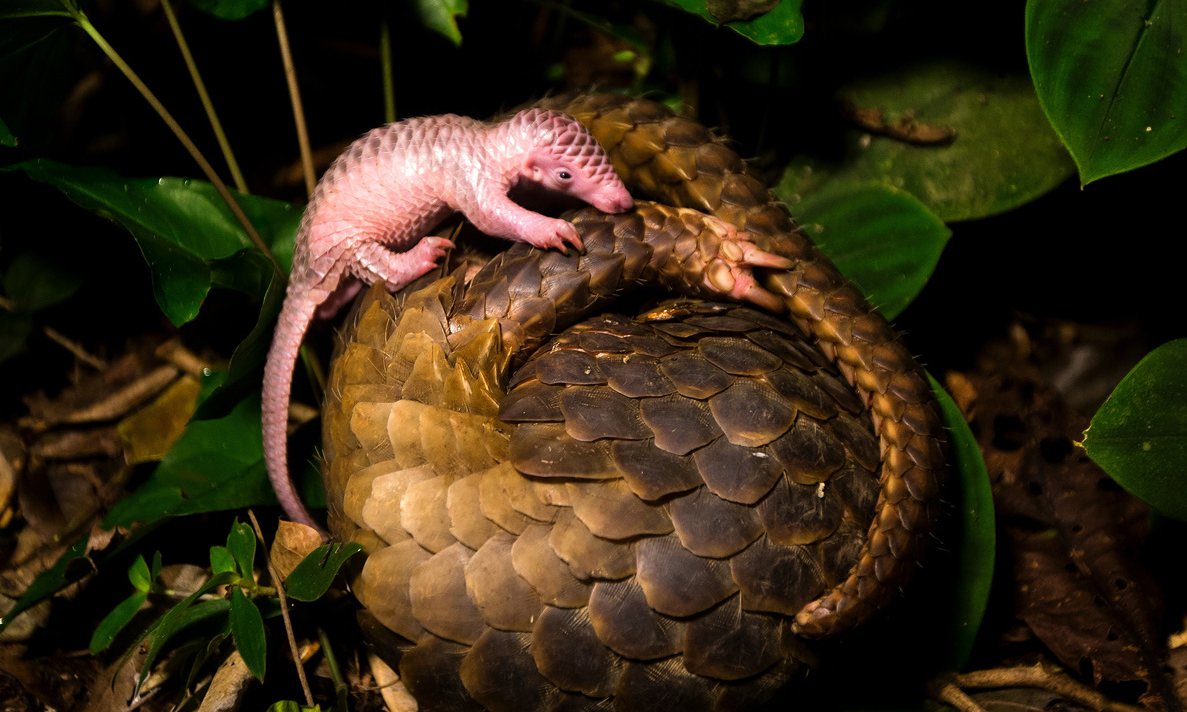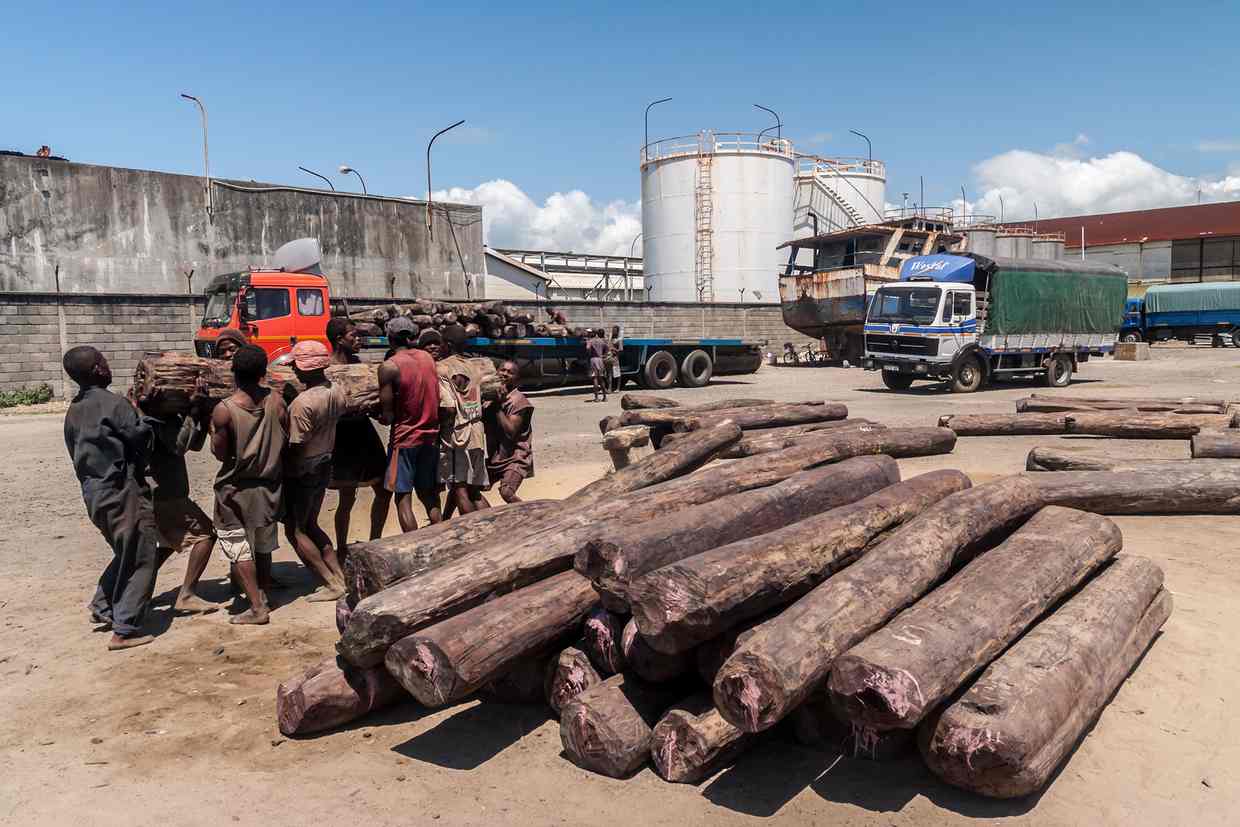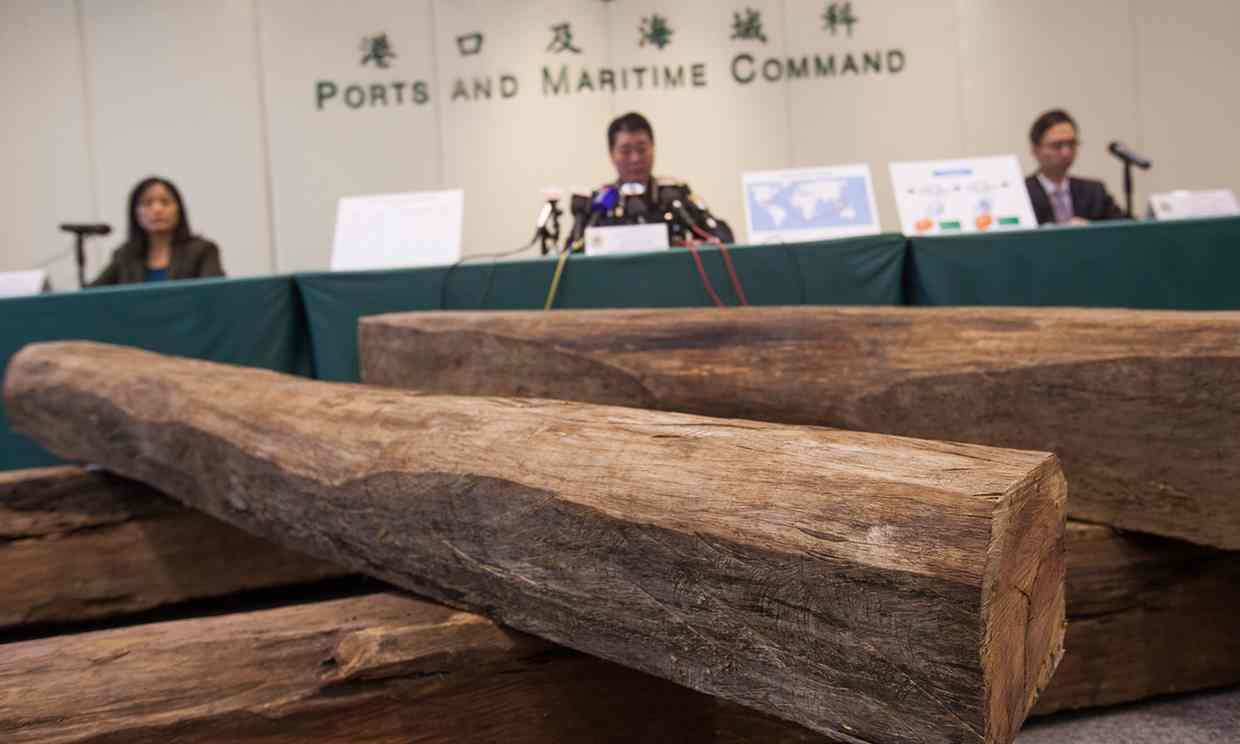Pangolins thrown a lifeline
at global wildlife summit with total trade ban
Damian Carrington in Johannesburg; Wednesday 28 September 2016 16.10
World's
most illegally trafficked mammal wins total ban on international trade in all
species under the strictest Cites protection possible
More than
1 million wild pangolins have been killed in the last decade. Photograph: Paul
Hilton/WCS
Pangolins,
the world's most illegally trafficked mammal, were thrown a lifeline at a
global wildlife summit on Wednesday with a total trade ban in all species.

More than
a million wild pangolins have been killed in the last decade, to feed the huge
and rising appetite in China and Vietnam for its meat and its scales, a
supposed medicine. The unique scaly anteaters are fast heading for extinction
in Asia and poachers are now plundering Africa.
But the
182 nations of the Convention
on the International Trade in Endangered Species (Cites) unanimously
agreed a total ban on international trade on all species at the summit in
Johannesburg, prompting cheers and applause from delegates.
Cites
works to crack down on wildlife trafficking, currently a $20bn-a-year criminal
enterprise, and to ensure the legal trade in food, skins, pets and traditional
remedies does not threaten the survival of species. The summit also boosted
protection for the barbary ape on Wednesday, Europe's only wild primate, and a
spectacular-horned mountain goat.
The four
Asian species of pangolin - Indian, Philippine, Sunda and Chinese - have been
decimated by illegal poaching. The animals breed slowly and are easy to catch -
they simply roll up when threatened. "It is an effective strategy against a
hungry lion, but a disadvantage when approached by a human collector,” said
Nigeria's delegate, who added that the price of pangolin scales has risen
tenfold in last five years.
The
rampant scale of the black market has been revealed by frequent huge seizures:
Indonesian authorities confiscated and burned thousands of frozen pangolins in 2015,
while a Chinese ship which ran aground in the Philippines in 2013 was carrying 10 tonnes of pangolin. But traffickers
have increasingly targeted the four African species: giant, South African,
long-tailed and white-bellied. In June, more than 11 tonnes of pangolin scales
were seized in Hong Kong in just two shipments from Africa.
Vietnam's
delegate said the upgrading of pangolins to Cites appendix 1 on Wednesday - the
strictest protection possible - was critical for the survival of the Sunda and
Chinese pangolins in particular, which are critically endangered. The move will
pressure affected nations into tougher law enforcement and higher penalties for
criminals.
Indonesia
was the only nation to oppose the new protection for Sunda and Chinese
pangolins, while China abstained, noting that pangolins are also caught for
bushmeat in many countries and that habitat loss is also a factor. Laos
supported the Asian pangolin proposals, but the Guardian revealed on Tuesday
how senior Laos officials have cut deals with wildlife
traffickers.
"This is a huge win and rare piece of good
news for some of the world's most trafficked and endangered animals,” said
Ginette Hemley, head of the WWF delegation to Cites. "This eliminates any
question about legality of trade, making it harder for criminals to traffic
them and increasing the consequences for those who do.” She said efforts to
reduce the demand in China and Vietnam were vital too.
"This
decision will help give pangolins a fighting chance,” said Dr Susan Lieberman,
at the Wildlife Conservation Society. "The world is standing up
for the little guy with this pivotal decision. These species need extra
protection and now they will get it.”
Like
pangolins, the protection for the endangered barbary
ape - the only wild primate in Europe - was increased to the highest
level. The population of the ape, found in Gibraltar, Morocco and Algeria, has
at least halved in the last 30 years, to as few as 6,500.
Many
barbary apes, mostly infants, are illegally captured each year, largely for the
European exotic pet trade and to be used as props for tourist photos.
Gerben-Jan Gerbrandy, MEP and head of the European parliament delegation to
Cites, said: "This is a key next step in protecting a species for which the EU
is unfortunately a key destination market.”
Some of the
Cites decisions on Wednesday removed existing protection from species where
conservation efforts have been successful. South Africa won unanimous support
for the removal of the strictest protection from the Cape mountain Zebra. Its
population is now growing at 9% a year, with 4,800 living in the country.
The
protection for the endangered barbary ape - the only wild primate in Europe -
was increased to the highest level. Photograph: Bruno D'Amicis/NPL/Alamy Stock
Photo
"It is
one of the success stories of large mammals in South Africa” said South
Africa's environment minister, Edna Molewa. "It is no longer at risk of
extinction.” The looser protection will allow more trophy hunting, which South
Africa says provides incentives for conservation efforts on private land.
The wood
bison, one of the two subspecies of American bison, was completely removed from
the Cites protective list on Wednesday, as its population has grown to 9,000
and is not threatened by poaching. There are about 500,000 American bison in
total, far fewer than the 20 million or more that once roamed the continent.
Also on
Wednesday, Georgia and the EU gained some protection for the western
tur, a mountain goat with spectacular horns found only in the
Caucasus mountains. The population of the goat, hunted as trophies, has fallen
from 12,000 to 4,000 in Georgia in the last 30 years. Russia, which hosts
20,000 of the goats, had opposed the proposal, arguing the goat was already
well protected and that trophy hunting encouraged gave conservation and helped
prevent poaching.






 Windhoek,
Namibia. The theme of this year's Annual Conference and General Meeting of the
South African Chief Justices Forum (SACJF), "Contemporary Issues in the
Prevention of Organised Crime”, held from 22 - 25 September 2016, was a follow
up to the Regional Judiciary Retreat held in Swakopmund, Namibia in July 2015.
Windhoek,
Namibia. The theme of this year's Annual Conference and General Meeting of the
South African Chief Justices Forum (SACJF), "Contemporary Issues in the
Prevention of Organised Crime”, held from 22 - 25 September 2016, was a follow
up to the Regional Judiciary Retreat held in Swakopmund, Namibia in July 2015. 


 THE High Court yesterday quashed the decision by Kisutu
Resident Magistrate's Court to nullify the money laundering count against
former Tanzania Revenue Authority (TRA) Commissioner General Harry Kitilya and
two others.
THE High Court yesterday quashed the decision by Kisutu
Resident Magistrate's Court to nullify the money laundering count against
former Tanzania Revenue Authority (TRA) Commissioner General Harry Kitilya and
two others.